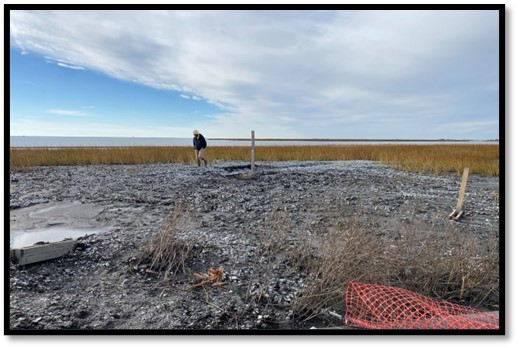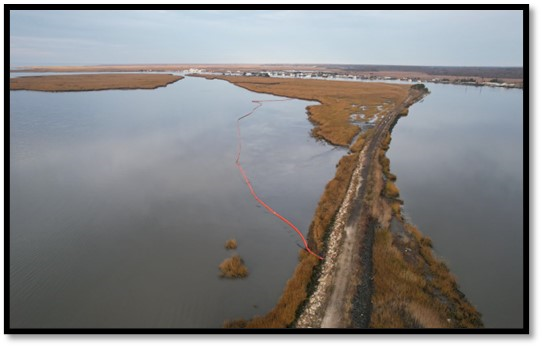

April/May 2025 - From Sediment to Sustainability: Making Beneficial Use of Dredged Material in Tower Times by Sam Heilig (page 4).
December 16, 2024 - Spotlight on UMRR Steamboat Island Habitat Rehabilitation Program in Dredging Today by Eldin Ganic, Schiedam, Netherlands.
August 14, 2024 - Beneficial Reuse of Mississippi River Dredge Sand by Julie Plummer, Area 5
August 2, 2024 - From the bottom up: USACE constructs island for birds using dredge material
January 29, 2024 - Maurice River Channel Dredging and Beneficial Use Placement- Philadelphia District (NAP):
The Philadelphia District, in collaboration with contractor Barnegat Bay Dredging Company, achieved a remarkable feat in the recent dredging project of the Maurice River federal navigation channel. Approximately 75,000 cubic yards of material were successfully dredged and put to beneficial use within the Heislerville Wildlife Management Area in Cumberland County, New Jersey, located along the Delaware Bay. This achievement is significant as it marks the first maintenance of the authorized 7-ft MLLW channel in nearly 25 years, addressing navigation challenges and supporting economic development in an underserved community.


The project not only exceeded expectations by completing ahead of schedule in late December but also had a profound impact on the Heislerville Dike, a crucial structure protecting natural resources and local industries from the forces of nature. Partnering with the NJDEP, the Philadelphia District aimed to enhance adjacent wetlands, providing a resilient buffer against breaches while creating sustainable habitats for threatened and endangered birds.
The adaptive management approach employed by the District and the contractor led to the successful creation of natural infrastructure, fostering wetland enhancement and habitat creation. Ongoing collaborations with ERDC, the State of New Jersey, and the University of Pennsylvania will continue to monitor the placement site and channel infilling over the next year, ensuring the project's long-term success.
This project not only represents a triumph for Beneficial Use Placement of Dredged Material (BUDM) but also signifies a shift towards more sustainable practices, reducing maintenance costs for the Maurice River navigation project while benefitting the environment and local communities.
January 9, 2024 - Corps experiments with sediment feed from shallows
July 25, 2023 - Dredging begins of Shrewsbury and Navesink rivers